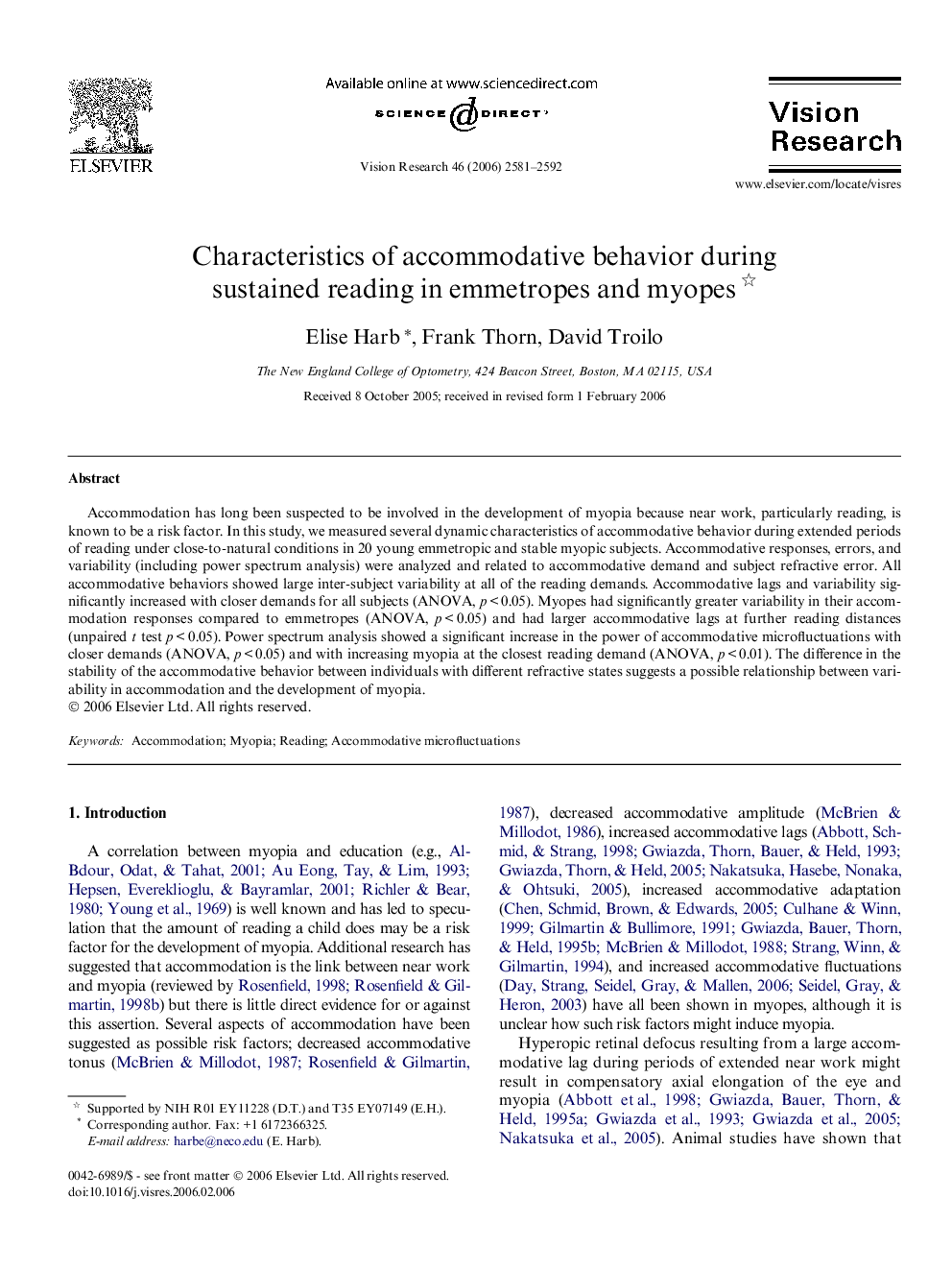| Article ID | Journal | Published Year | Pages | File Type |
|---|---|---|---|---|
| 4036239 | Vision Research | 2006 | 12 Pages |
Accommodation has long been suspected to be involved in the development of myopia because near work, particularly reading, is known to be a risk factor. In this study, we measured several dynamic characteristics of accommodative behavior during extended periods of reading under close-to-natural conditions in 20 young emmetropic and stable myopic subjects. Accommodative responses, errors, and variability (including power spectrum analysis) were analyzed and related to accommodative demand and subject refractive error. All accommodative behaviors showed large inter-subject variability at all of the reading demands. Accommodative lags and variability significantly increased with closer demands for all subjects (ANOVA, p < 0.05). Myopes had significantly greater variability in their accommodation responses compared to emmetropes (ANOVA, p < 0.05) and had larger accommodative lags at further reading distances (unpaired t test p < 0.05). Power spectrum analysis showed a significant increase in the power of accommodative microfluctuations with closer demands (ANOVA, p < 0.05) and with increasing myopia at the closest reading demand (ANOVA, p < 0.01). The difference in the stability of the accommodative behavior between individuals with different refractive states suggests a possible relationship between variability in accommodation and the development of myopia.
